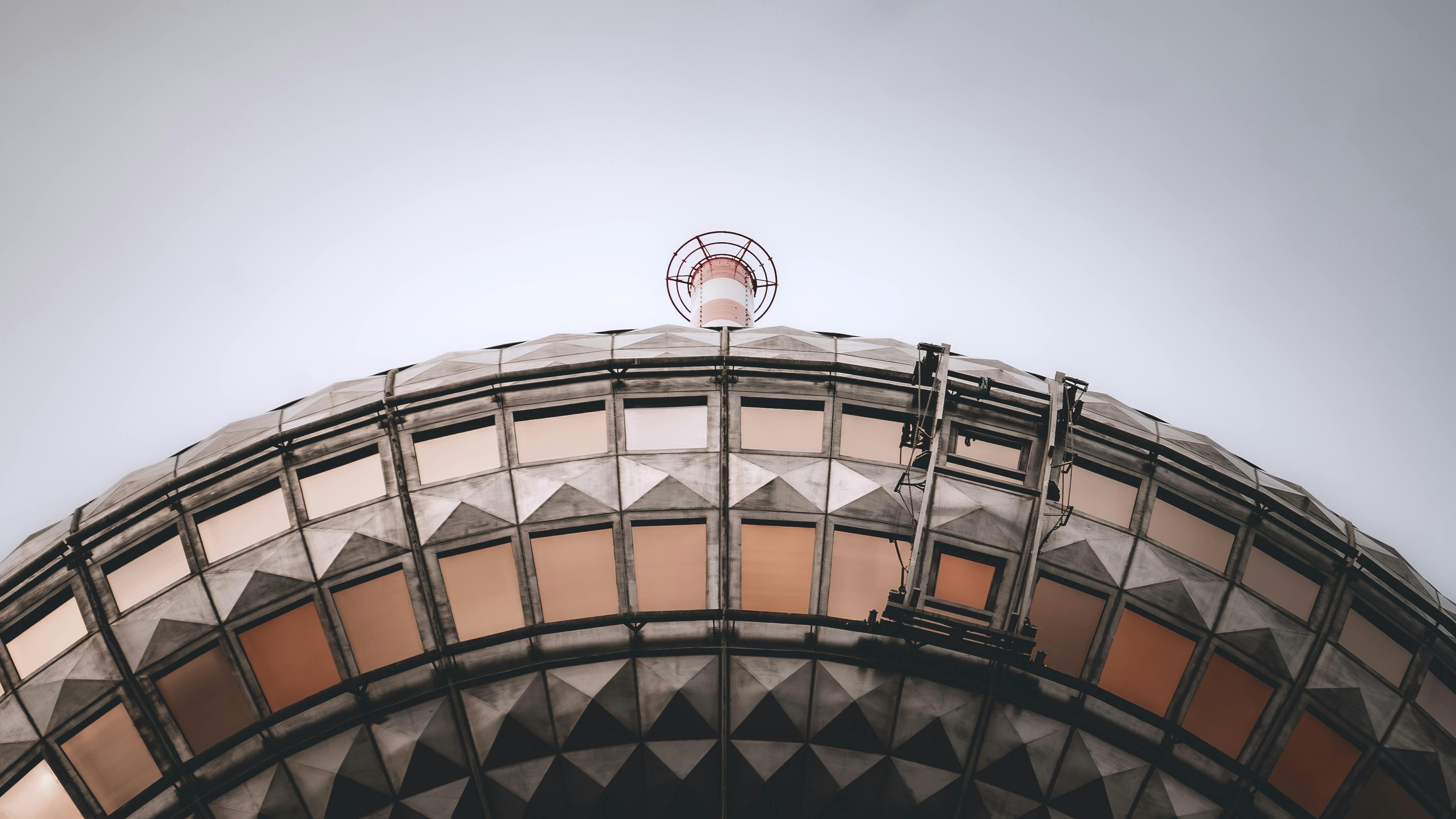Step into the enchanting world of Laxminarayan Temple Delhi, a contemporary marvel that seamlessly blends architectural splendor with spiritual purity. Amidst the bustling cityscape of Delhi, this modern temple stands as a testament to the enduring devotion of the Indian people. With intricate carvings and majestic domes, the temple is a visual treat for the eyes, inviting visitors to immerse themselves in its tranquil atmosphere. Join us as we uncover the beauty and significance of this sacred sanctuary, where past and present converge in a harmonious embrace.

History of Laxminarayan Temple Delhi
Construction of the temple
The Laxminarayan Temple, also known as the Birla Mandir, is a renowned Hindu temple located in the heart of Delhi, India. The construction of this magnificent temple commenced in the year 1933. It was built by the renowned industrialist duo, Shri Jugal Kishore Birla and Shri Rameshwar Das Birla, belonging to the esteemed Birla family. The temple was constructed with the aim of providing a modern place of worship for the devotees of Lord Vishnu and Goddess Lakshmi.
Architectural style
The architecture of the Laxminarayan Temple is a fascinating blend of traditional Indian temple architecture and modern influences. The temple is built in the Nagara style, which is characterized by its high curved roof, intricate carvings, and ornamental motifs. The use of white marble in the construction imparts a sense of serenity and grandeur to the temple, making it a visual treat for the visitors. With its towering Shikharas and intricately sculpted spires, the temple stands as a testament to the mastery of Indian craftsmanship.
Inauguration and significance
The Laxminarayan Temple was inaugurated by Mahatma Gandhi, the Father of the Nation, on the 6th of February, 1939. Since then, the temple has become a sacred space for devotees and a symbol of cultural identity for the people of Delhi. It holds immense religious and historic significance, as it not only provides a platform for spiritual practices but also serves as a center for cultural and social gatherings. The temple is a testament to the cultural heritage of India and stands as a reminder of the rich traditions and customs that have been passed down through generations.
Architectural Features of Laxminarayan Temple
External facade
The external facade of the Laxminarayan Temple is a sight to behold. The temple stands tall, with intricately carved walls and pillars showcasing beautiful depictions of Hindu deities and mythological narratives. The white marble used in the construction gives the temple an ethereal glow, especially when illuminated by the sunlight. The attention to detail in the carvings, with every nook and cranny adorned with symbolic motifs, is a testament to the craftsmanship of the artisans involved in its creation.
Entrance and foyer
As one enters the temple premises, they are greeted by a grand entrance adorned with ornate carvings and sculptures. The foyer serves as a transition space from the outside world into the sacred realm of the temple. The walls of the foyer are adorned with beautiful frescoes depicting scenes from Hindu mythology, transporting visitors into a world of divine beauty and spirituality.
Main prayer hall
The main prayer hall, or the sanctum sanctorum, is the focal point of the Laxminarayan Temple. It houses idols of Lord Vishnu and Goddess Lakshmi, the presiding deities of the temple. The idols are made of intricately carved marble and are adorned with jewels and clothing. The atmosphere inside the prayer hall is filled with deep devotion and tranquility, as devotees offer their prayers and seek blessings from the divine.
Shikharas and spires
The Laxminarayan Temple is renowned for its majestic Shikharas and spires that reach towards the sky. These towering structures are adorned with delicate carvings and intricate motifs, showcasing the rich cultural heritage of India. The spires serve as a symbol of the temple’s grandeur and are a sight to behold, especially during religious festivals when they are beautifully illuminated.

Religious Significance of Laxminarayan Temple
Dedication to Lord Vishnu and Goddess Lakshmi
The Laxminarayan Temple is dedicated to Lord Vishnu, the preserver of the universe, and his consort Goddess Lakshmi, the goddess of wealth and prosperity. The temple holds immense religious significance for devotees who come to seek the blessings of these divine deities. Lord Vishnu is revered as the embodiment of compassion and righteousness, while Goddess Lakshmi is worshipped as the goddess of wealth and fortune. The temple provides a sacred space for devotees to connect with these divine energies and seek their guidance and blessings.
Religious practices and rituals
The Laxminarayan Temple follows the traditional rituals and practices of Hinduism. Daily prayers, known as Aartis, are performed in the morning and evening to honor Lord Vishnu and Goddess Lakshmi. Devotees offer flowers, incense, and sweets to the deities as a mark of their devotion. Special religious ceremonies are conducted on auspicious occasions and festivals to invoke the blessings of the gods and goddesses.
Festivals celebrated at the temple
The Laxminarayan Temple is a hub of cultural and religious celebrations throughout the year. Festivals such as Diwali, the Festival of Lights, Navratri, the nine nights dedicated to the Divine Mother, and Janmashtami, the birth anniversary of Lord Krishna, are celebrated with great fervor and enthusiasm. During these festivals, the temple premises come alive with vibrant decorations, devotional singing, and traditional dances, creating an atmosphere of joy and celebration.
Visiting Laxminarayan Temple
Location and accessibility
The Laxminarayan Temple is conveniently located in Mandir Marg, near Connaught Place, in the heart of Delhi. It is easily accessible by both public and private transportation. The temple is surrounded by well-connected roads, making it a popular destination for tourists and devotees alike.
Opening hours
The temple is open to visitors from early morning till late in the evening, allowing devotees and tourists ample time to explore its magnificent architecture and partake in religious ceremonies. The timings may vary on special occasions and festivals, so it is advisable to check the temple’s official website or contact the authorities for updated information.
Entrance fee and donations
There is no entrance fee to visit the Laxminarayan Temple. However, donations are welcome and contribute to the maintenance and upkeep of the temple. Devotees often make voluntary contributions in the form of money, food, or other necessary items as a mark of their gratitude and support.
Guidelines for visitors
While visiting the Laxminarayan Temple, visitors are expected to adhere to certain guidelines to maintain the sanctity and purity of the temple. It is customary to remove footwear before entering the temple premises. Modest attire is appreciated, and photography or videography may be restricted in certain areas. Visitors are also advised to maintain silence and respect the religious sentiments of the devotees.

Temple Complex and Surroundings
Garden and landscape
The Laxminarayan Temple is surrounded by lush green gardens and well-maintained landscapes. The gardens offer a serene ambiance and serve as a peaceful retreat amidst the bustling city. Visitors can take a leisurely stroll through the gardens, enjoying the beauty of nature and finding solace in the tranquility it offers.
Other structures within the complex
Apart from the main temple, the Laxminarayan Temple complex boasts several other structures of architectural and historical significance. These include ancillary shrines dedicated to various deities, prayer halls for meditation and spiritual gatherings, and educational facilities aimed at spreading knowledge about Hinduism and its principles.
Nearby attractions
The Laxminarayan Temple is located in close proximity to several other attractions, making it an ideal destination for tourists. The nearby India Gate, a prominent war memorial, and Rajpath, the ceremonial boulevard, offer a glimpse into India’s rich history and culture. The bustling markets of Connaught Place and Janpath, known for their shopping and dining options, are also just a stone’s throw away from the temple.
Divinity in the Modern Era
Integration of traditional and contemporary elements
The Laxminarayan Temple seamlessly blends traditional architectural elements with modern features, symbolizing the harmonious coexistence of the past and the present. The temple showcases the evolution of religious spaces, adapting to the needs and preferences of the modern era while keeping intact the essence of spirituality and devotion.
Role in promoting spirituality
The Laxminarayan Temple plays a pivotal role in promoting spirituality and providing a space for individuals to connect with their inner selves and the divine. The temple serves as a beacon of light, inspiring people to lead a virtuous and righteous life and reminding them of the eternal values that transcend time and space.
Modern amenities and facilities
Despite its traditional roots, the Laxminarayan Temple embraces modern amenities and facilities to cater to the needs of its visitors. The temple complex is well-equipped with clean washrooms, seating areas, and drinking water facilities. Adequate arrangements are made to ensure the comfort and convenience of the devotees, thereby establishing a balance between spirituality and practicality.
Art and Sculptures in Laxminarayan Temple
Carvings and reliefs
The Laxminarayan Temple is adorned with exquisite carvings and intricate reliefs depicting various mythological narratives and scenes from Hindu scriptures. Skilled artisans have meticulously chiseled the marble walls and pillars, bringing to life the tales of gods, goddesses, and divine beings. The carvings serve as a visual treat and a source of inspiration, showcasing the rich cultural heritage of India.
Statues and idols
Idols and statues are an integral part of the Laxminarayan Temple’s artistic landscape. The temple houses a multitude of idols, each representing a specific deity or aspect of the divine. These statues are made with great precision and artistry, reflecting the devotion and reverence with which they are crafted. The idols serve as a focal point for spiritual practices, allowing devotees to establish a direct connection with the divine energies they represent.
Depiction of Hindu mythology
Hindu mythology is brought to life through the art and sculptures adorning the Laxminarayan Temple. The intricately carved scenes narrate tales of gods, goddesses, and mythical creatures, intricately woven together to create a captivating visual narrative. Visitors are transported into the enchanting world of Hindu mythology, where every sculpture tells a story and every corner reveals a hidden secret waiting to be discovered.
Promoting Social Welfare and Humanitarian Causes
Charitable activities and initiatives
The Laxminarayan Temple actively engages in charitable activities and initiatives aimed at uplifting and empowering the underprivileged sections of society. The temple runs schools and vocational training centers, providing education and skills to those in need. Additionally, various welfare programs, such as health camps and distribution of essential supplies, are organized to cater to the basic needs of the less fortunate.
Empowering the underprivileged
The Laxminarayan Temple believes in the importance of empowering the underprivileged and providing them with opportunities to lead a dignified life. Through its various initiatives, the temple aims to create a more equitable society where every individual, regardless of their background or circumstances, can thrive and fulfill their potential.
Philanthropic efforts
Philanthropy is an inherent part of the Laxminarayan Temple’s mission and vision. The temple actively collaborates with other organizations and individuals to address pressing social issues and contribute to the welfare of society. From providing aid during natural disasters to supporting initiatives for environmental conservation, the temple’s philanthropic efforts leave a lasting impact on both individuals and communities.
Preservation and Conservation Efforts
Maintenance and restoration projects
The Laxminarayan Temple places great emphasis on the maintenance and restoration of its architectural marvels. Regular upkeep and periodic restoration projects are carried out to ensure the longevity and integrity of the temple. Skilled artisans and craftsmen are employed to preserve the intricate carvings and sculptures, keeping the temple’s artistic heritage intact for future generations.
Conservation of cultural heritage
The Laxminarayan Temple recognizes the importance of preserving India’s rich cultural heritage. The temple actively collaborates with heritage conservation organizations and governmental bodies to protect and promote cultural landmarks and traditions. Through educational programs and awareness campaigns, the temple aims to instill a sense of pride and responsibility among individuals towards their cultural heritage.
Promoting sustainability
In line with its commitment to environmental sustainability, the Laxminarayan Temple has implemented several initiatives to reduce its carbon footprint and promote eco-friendly practices. The temple premises are adorned with lush green gardens and solar panels, emphasizing the importance of preserving nature and harnessing renewable energy sources. These efforts not only help in creating a sustainable future but also inspire visitors to adopt eco-conscious habits in their own lives.
Recognition and Awards
Acknowledgment by authorities
The Laxminarayan Temple has been widely acknowledged and appreciated by authorities for its architectural beauty and spiritual significance. The temple has received recognition from various governmental bodies and municipal authorities for its contribution to promoting religious tourism and cultural heritage.
International acclaim
The fame of the Laxminarayan Temple has transcended borders, attracting visitors and accolades from across the globe. The temple has been featured in international travel guides and has received acclaim for its architectural splendor and promotion of cultural heritage.
Honors and accolades received
Over the years, the Laxminarayan Temple has been honored with numerous awards and accolades for its exemplary commitment to art, culture, and spirituality. These honors serve as a testament to the temple’s role in preserving and promoting India’s rich traditions and heritage.
In conclusion, the Laxminarayan Temple Delhi stands as a magnificent testament to India’s cultural and religious heritage. With its awe-inspiring architecture, spiritual significance, and contributions towards social welfare and conservation, the temple continues to attract devotees and tourists from far and wide. A visit to this modern temple is not just a religious experience but also an opportunity to immerse oneself in the beauty, history, and spirituality that define India.
